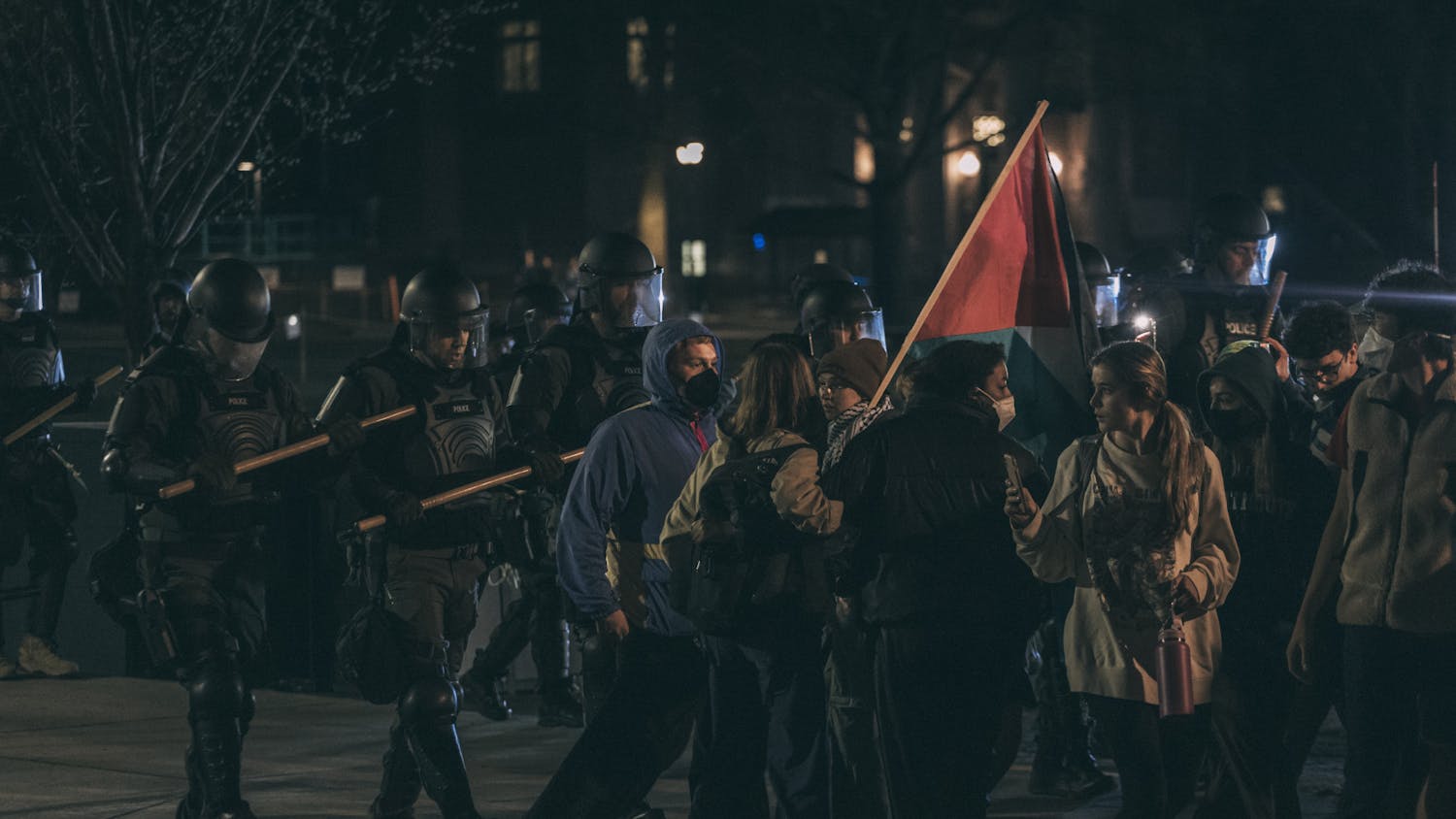In the past, Dartmouth’s incoming freshman class has always been tasked with reading a text as their Shared Academic Experience, an annual orientation activity to encourage dialogue and reflection among first-year students. This year, however, the Class of 2022 was instead told to “read” a mural.
When art history professor Mary Coffey was asked to be the lead faculty member for the Shared Experience this year, she knew she wanted to do something different. Coffey chose to have the Class of 2022 study José Clemente Orozco’s mural, “The Epic of American Civilization,” found on the lower floor of Baker Library .
“Faculty choose books because they are easy to disseminate,” Coffey said. “I didn’t feel comfortable having [the Class of 2022] read a book. I didn’t want to make them study. I’m most passionate about presenting the Orozco mural.”
The first goal of this year’s Shared Academic Experience was to have freshmen gain exposure to and engage with the mural, according to Coffey. The overarching goal was to teach the students about the history of Orozco’s work.
“What I wanted was to introduce all incoming students to art, to an art piece they could encounter again,” Coffey said. “Some will encounter the mural in class, but some will never think about it again. I think it’s an important object and work of art in the global sense.”
Since the murals could not be sent to the students over the summer, a Canvas site was set up to have the students learn about the history of the mural on campus, according to Coffey.
David Kantor ’22 said he thought the Canvas site was useful. In addition to allowing him to explore the mural, it taught him how to use Canvas — frequently used by Dartmouth professors — before school started, Kantor said.
“The site taught me about the pan-American nature of the Americas and how it isn’t singularly defined by the United States of America,” he said. “I learned how it’s also defined by North and South America.”
A discussion forum was also available on Canvas. According to Coffey, her presentation to the Class of 2022 on the mural was shaped around two discussion questions she posted on the forum: “What does America mean to you?” and “What is education good for?”
As a result of the answers from members of the Class of 2022, Coffey chose political climate, citizenship and belonging as themes to discuss.
Additionally, Coffey said she wanted to introduce students to important resources on campus, such as the Rauner Special Collections Library and the Hood Museum of Art.
The first-year students also had the opportunity to read documents written by students, alumni and the national press about Orozco’s mural. These documents were provided by Rauner and the Hood Museum, the caretakers of the mural.
Addison Wessel ’22 said she was surprised that the documents were so accessible and that students could just “flip through” them.
“It was interesting seeing the political and social norms that were expected of Orozco and how he didn’t care,” Wessel said. “It was interesting to see the letters about how the College dealt with the response [of the Dartmouth community to the mural].”
Guhui Zhang ’22 said she was amazed by how the documents could connect to students’ lives at Dartmouth.
“Reading the documents about the murals and then getting to see the murals felt like traveling through history,” Zhang said. “That was really cool.”
Five tables were set up in the reading room of Rauner, each with different historical documents about the murals, according to Jay Satterfield, head of special collections. A film documenting the process of painting the murals was also shown in the Bryant Room of Rauner.
Freshmen read letters and newspaper articles that reflected a negative sentiment toward the College hiring an immigrant communist artist during the Great Depression, Satterfield said. Students were also able to read firsthand accounts by students who assisted Orozco in sketching the murals.
“It is very important that no institution forgets its history, but also realizes that values change through time,” Hood Museum of Art director John Stomberg said. “They evolve ethically. We learn not just about the history of the mural itself, but we learn a new way of thinking.”
Satterfield said he believes that the Class of 2022’s education on the murals was beneficial because “when you come to a place, it becomes part of you.”
“When [the members of the Class of 2022] wear a Dartmouth hat, they need to know what they are representing,” he said.
Brian Provost ’22 said he learned from the mural that first impressions are not always correct.
“[Coffey] opened up her lecture talking about the fact that most of us looked at the mural from what we thought was the beginning of it, Panel 1, whereas she believed the start of the story was a panel in the middle,” Provost said. “She talked about how the mural is not even a story, but rather a collection of ideas on a wall that the viewer makes into a story.”
Coffey said she hopes the freshmen recognize that there are many ways to engage with a work of visual art.
“This is just a first encounter, an opening,” she said. “I hope over the years they return to the murals with their own questions. Each of their returns to the mural will be enabled by this opening and exposure to the murals. We tried not to tell them what to think, but to help them realize they can think through it overtime.”




